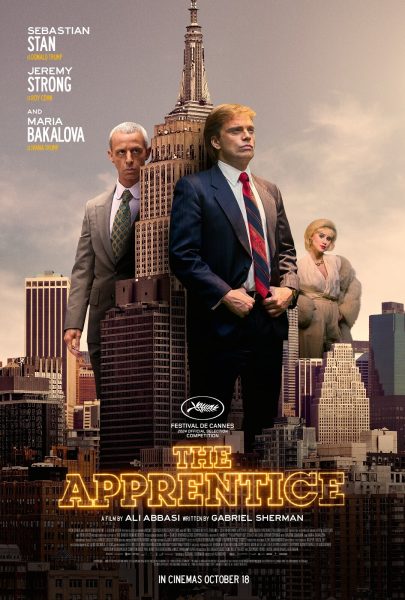As RE’s diversity, equity, and inclusion initiatives expand, the school has more work to do
The topic of diversity has been at the forefront of American discussions for decades, but this past summer, following the murder of George Floyd, those discussions have sparked new movements and gained a new sense of urgency. People around the world are finally beginning to confront racial inequalities and take on the challenge of ensuring equality and inclusion for everyone, regardless of race. Over the summer, the Ransom Everglades community reflected on racial injustice and began to form new programs dedicated to embracing diversity at RE. However, many students feel that RE could still be doing more to promote diversity, equity, and inclusion (DEI) on campus.
Before this summer, Ransom Everglades was already beginning to take strides towards promoting inclusion by, among other things, participating in the High Resolves program, which seeks to promote equality by engaging students in group activities at school, and hiring a new Director of Inclusion and Community Engagement, Carla Hill. On July 10th, the school emailed a letter to all students outlining more steps the school is taking to make the community more inclusive. The letter outlined how RE had created a Diversity, Equity, and Inclusion Committee. The committee has stated that its objective is to create “an environment where students can be themselves; students are exposed to and challenged by a broad range of perspectives; and students can develop values of respect, integrity and compassion, and a commitment to social responsibility.” Additionally, Ransom Everglades formed an Anti-Racism Task Force, which is led by Ms. Hill. The task force’s objective is to “ensure that Ransom Everglades School’s core values, as articulated in the school’s mission and particularly as they relate to diversity, equity, and inclusion, are fully integrated into the school’s curriculum, programs and culture.”
With these changes, it’s clear that the school has made efforts designed to make the community more inclusive and promote equality on campus. However, students have shared mixed reactions regarding RE’s efforts. Although many students commend the efforts being taken by Ransom Everglades, just as many have expressed their concern about the new programs and their potential efficacy.
Tessence Cruse ’21 explained that RE is moving “in the right direction but needs to move faster and add diversity in the admissions process.” Cruse is one of many RE students who believes that although RE is taking steps towards creating an inclusive environment, they may be focusing their efforts in the wrong areas. Her concerns address the lack of diversity within the Ransom Everglades community. Although Ransom Everglades reports that 54% “of the students come from multicultural backgrounds,” most students are either White or Hispanic, which has led many to feel that their ethnicity isn’t represented at the school.
Megan Diston ‘21 commended RE for their work towards achieving equality, but she commented that “it would be awesome if they could find some way to extend their reach in the community to work towards a more diverse student body in the future. That would do wonders for the minority students to feel like they belong to the RE community. Because, and I speak from personal experience, it’s hard to not feel like you’re on the outside sometimes when you are the only black person in the classroom.”
Diston’s experience of being the only person of her ethnicity in the classroom is not an unusual occurrence at RE. As someone who is eight different ethnicities, I share Diston’s experience of often being the only non-White or Hispanic student in my classes. I believe that RE’s lack of diversity has led to discrimination on campus. The unintentional racist jokes and comments about my Middle Eastern, Asian and Caribbean heritage is evidence that the community isn’t nearly diverse enough, and the school needs to incorporate more opportunities to be educated about other cultures. Ransom Everglades does have mandatory courses for American and British literature, but no other culture is represented in the same way. The lack of representation of races and ethnicities other than White and Hispanic has led many students to believe Ransom should focus their efforts more on diversifying their student population and integrating diversity into the curriculum.
Students also report that they believe that because the Ransom Everglades student population is predominantly comprised of two ethnicities, it’s easy for stereotypes and misconceptions about a race to occur. The High Resolves Program that RE launched in 2019 is designed to fight that, in part by engaging students in group activities that expose them to the harmful effects of microaggressions and unconscious bias.
Some students have noted, however, that although the concept of the High Resolves Program is outstanding, the program itself has not been having a strong impact on student behavior in RE’s community. “I’ve heard kids say discriminatory words and phrases before, but then they turn around and nod along during High Resolves,” said Liv Steinhardt ’23. “By sticking with programs like High Resolves that don’t target race in a matter-of-fact way, it’s worse than dodging the problem altogether because it creates a sense of complacency. Those high schoolers who nod along during High Resolves and then they turn around and say racist things aren’t learning anything.”
Diversity initiatives like High Resolves have faced an additional obstacle, however: the challenges of having deeper, meaningful conversations during REmote School. With the recent move to on-campus learning, things may change.
“Many of these programs are new,” noted Inceni Cabrera ‘22. “It’s my opinion that it is too early to tell if they have had a significant effect on inclusion within the community. I can only hope that they’re here for the long run and truly impact the community and are not just performative activism.”




